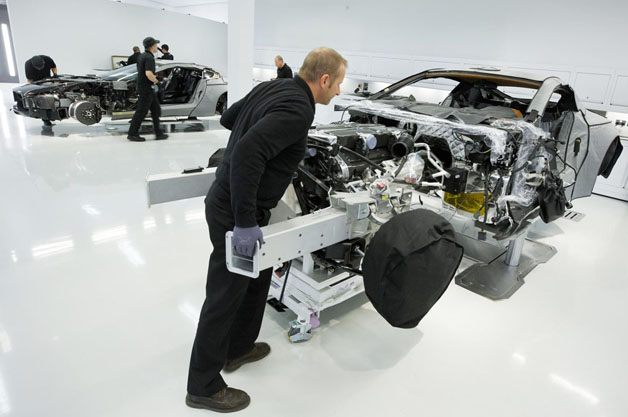
It's been thirteen years since Aston Martin introduced the original V12 Vanquish. The model was effectively been replaced twice over by the time it reached its Bar Mitzvah, but its underlying platform is still around. And not just around, either: it underpins everything Aston makes and has made ever since it came on the scene, save for the Cygnet and the One-77 supercar. That includes the V8 and V12 Vantage, the short-lived Virage, the new Vanquish, the DB9, DBS, V12 Zagato and even the four-door Rapide. But while it may seem like forever that Aston's been using the VH platform, it won't be around forever more.
In announcing its positive financial results for 2013, Aston Martin CFO Hanno Kirner confirmed: "We are engineering a completely new architecture and technologies to ensure that our next generation of sports cars is at the forefront of design, performance and technology." The new platform is expected to underpin the next generation of Astons Martin, and will be powered by a new V8 engine being developed by Mercedes-AMG, similar to the arrangement that sees V12s furnished to Pagani for the Huayra.
Whether an AMG-developed V12 is also in the cards for Aston Martin remains to be seen – the company ran on V8 power alone from the mid 70s (when its six-cylinder engine was retired) until the Ford-developed DB7 brought six- and then twelve-cylinder power. That aging but glorious 6.0-liter engine, by the way, still powers the vast majority of the company's lineup.
The platform and associated technologies are being funded by the influx of capital from shareholders Investindustrial, Primewagon and Adeem Investment and by a 13-percent increase in revenue due to the launch of the new Vanquish Volante and V12 Vantage S, as well as the company's expansion into new markets like Mexico and Thailand.
It wasn't long ago that upon spending a week with the company's Vanquish coupe that we fell just short of love, wondering aloud how long Aston could weather its uncertain financial picture while still relying heavily on elderly technology and drivetrains cradled in elderly platforms. We now appear to have our answer, and we like what we're hearing.
No comments:
Post a Comment